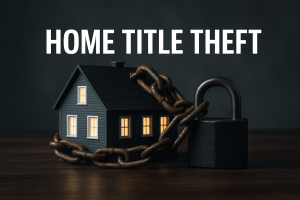The Coffeehouse portfolio was derived from the book, “The Coffeehouse Investor,” by Bill Schultheis (1998). The author was a former broker for Smith Barney who lectured on investing and personal finance after writing the book.
The basic premise of the book is that everyday retail investors can set up and manage a simple portfolio of index investments. So simple, in fact, that anyone could create it at a coffee shop.
The investment strategy is to have a simple “set it and forget it” portfolio that allows DIY investors to get on with their lives, “ignore wall street,” and all of the stressful daily market moves and financial news stories.
Consistent with other long term buy and hold strategies, the only maintenance needed would be to rebalance the portfolio periodically so that the composition percentages get back in line when they deviate from plan.
The purpose of this article is not to cast a vote for or against the Coffeehouse portfolio, but rather to describe the components and review its performance to date compared to the Classic 60/40 portfolio.
We will also list ETFs that you could consider as low cost components of this portfolio.
Coffeehouse Portfolio Composition
The portfolio has the following asset allocation:
- 10% US Large-Cap fund
- 10% US Large-Cap Value fund
- 10% US Small-Cap fund
- 10% US Small-Cap Value fund
- 10% US REIT fund (Real Estate Investment Trust)
- 10% International Stock index fund
- 40% Intermediate Bond fund
So, this appears to be somewhat similar to a classic 60/40 (Stock/Bond) portfolio with the twist being more targeted asset class slices for the 60% stock market portion rather than just a total stock market fund for the 60%.
Performance
Let’s compare the Coffeehouse portfolio to the Classic 60/40 portfolio in the following table.
| Category | Coffeehouse portfolio | Classic 60/40 portfolio | Comments |
|---|---|---|---|
| Data time frame | 1970 – 2023 | 1970 – 2023 | All data below is from PortfolioCharts.com |
| Average annual real return | 5.9% | 5.8% | Real return is after inflation is subtracted |
| Deepest Drawdown (using year end values) | (35%) | (37%) | The worst period of performance |
| Years to recover from deepest drawdown (using year end values) | 9-10 years | 12-13 years | How long it took the portfolio to get back to par after enduring the deepest drawdown |
| Safe Withdrawal Rate | 5.2% | 4.4% | Annual % withdrawn from a portfolio without running out of money in 30 years |
| Ulcer index | 7.8 | 10.7 | Measures the depth & duration of drawdowns (higher is worse) |
As with any data analysis, the time period matters. The more data, the better. We grabbed the data from PortfolioCharts.com, which contains the dataset from 1970 – 2023 (54 years).
As you can see from the above table, The Coffeehouse portfolio has performed slightly better than the Classic 60/40 portfolio over that time period.
The average annualized return in real terms is slightly better at 5.9% vs 5.8%. Note that the real return is after inflation is subtracted. For example, if the portfolio returned 10% in a year, but inflation was 3%, the real return would be 7% (10% – 3%).
Downside Protection
The Coffeehouse portfolio has performed better from a downside protection prospective. In other words, it’s drawdowns have not been as severe, and it has recovered faster from those drawdowns than the Classic 60/40 portfolio.
The max drawdown of the Coffeehouse portfolio was slightly better at 35%, versus 37% for the Classic 60/40. The recovery period period was better at 9-10 years compared to 12-13 years. The drawdown calculations used at PortfolioCharts.com are the end of year values.
The Ulcer index is better at 7.8 compared to 10.7 for the Classic 60/40. You can read more about the Ulcer index here.
Safe Withdrawal Rate
The safe withdrawal rate is supposed to help retirees determine how much they could withdraw from their portfolio each year without running out of money over a typical 30 year retirement.
The Classic 60/40 portfolio has a safe withdrawal rate of 4.4% (aka “the 4% rule”) over the 54 year period from 1970 – 2023. The Coffeehouse portfolio shows a better result at 5.2%.
The key to having a better safe withdrawal rate often not in the total return as much as it is in reduced volatility. The annual returns are very similar, but having lower volatility allowed the Coffeehouse portfolio to provide a better safe withdrawal rate during that time period.
Portfolio results summary
Based on past performance, both the Coffeehouse portfolio and the classic 60/40 portfolio are quite similar at 5.9% vs 5.8% real returns on average.
This makes both portfolios relatively equal for an accumulation portfolio, which would be for an investor who is adding funds to the portfolio or just letting it grow, with planned withdrawals far off in the future.
For investors who are in the withdrawal phase (financial independence or retirement), the Coffeehouse portfolio has provided a higher safe withdrawal rate in the past 54 years compared to the Classic 60/40 portfolio (5.2% vs 4.4%).
Building the Coffeehouse Portfolio with ETFs
It’s a good thing that there are more investment products than ever before for constructing portfolios for the DIY investor. Index funds are a reasonable choice. Exchange-traded funds (ETFs) allow for more timely trading and often better tax results (in a taxable account), are also widely available.
Here are some ETF options to consider when constructing the Coffeehouse portfolio. There are many others as well. Be sure to research all available choices before making a decision to invest.
Using a blend of Schwab, Vanguard and SPDR ETFs results in low fee structure. For those interested in a Vanguard only portfolio, those options are also listed below.
Note that fees can change over time, so be sure to check the fee for your investments periodically to ensure you are being charged what you had initially expected.
Coffeehouse portfolio using ETFs
| Asset Class | Portfolio % | Low cost ETF (ticker) | Low cost ETF fee | Vanguard (ticker) | Vanguard fee |
|---|---|---|---|---|---|
| US Large Cap Blend | 10% | SCHX | 0.03% | VOO | 0.03% |
| US Large Cap Value | 10% | SCHV | 0.04% | VTV | 0.04% |
| US Small Cap Blend | 10% | SCHA | 0.04% | VB | 0.05% |
| US Small Cap Value | 10% | VBR | 0.07% | VBR | 0.07% |
| US REITs | 10% | SCHH | 0.07% | VNQ | 0.12% |
| Non-US Equity | 10% | SPDW | 0.03% | VXUS | 0.07% |
| Intermediate Bonds | 40% | SCHR | 0.03% | BND | 0.03% |
| Total | 100% | Schwab, Vanguard & SPDR | 0.04% | Vanguard Only | 0.05% |
The additional cost of higher fees make a big difference in investment returns over time, as described in this Investopedia Article. Be sure to understand the impact before investing in any mutual funds or ETFs.
In reviewing the ETFs above, the fees are quite low compared to other choices in the marketplace, and should not have a material impact on returns over time.
Intermediate Bond asset class
One thing to mention would be the bond portion of the portfolio. At 40%, that is pretty significant.
There are different kinds of bond portfolios to consider.
One choice would be to go with intermediate US Treasuries or an overall intermediate bond ETF that includes both Corporate and Government bonds.
Another option would be to divide up the bond portion and go with some type of targeted mix, such as half (20%) in US intermediate treasuries and half (20%) in commercial bonds, or whatever mix you feel is appropriate for your portfolio.
Looking at the two bond ETFs shown above, SCHR & BND, we can see their composition is as follows:
| Portfolio composition | Vanguard Total Bond Market ETF (BND) | Schwab Intermediate Term US Treasury (SCHR) |
|---|---|---|
| US Treasury / Agency | 46.0% | 100.0% |
| Government Mortgage / Asset backed | 20.8% | 0.0% |
| Commercial, Industrial & Utility bonds | 29.7% | 0.0% |
| Foreign bonds | 3.5% | 0.0% |
| Total | 100.0% | 100.0% |
As you can see, the Schwab Intermediate Term US Treasury fund is 100% intermediate US Treasuries. Vanguard has a similar ETF that is also 100% intermediate US Treasuries. That ticker is VGIT.
The Vanguard Total Bond market ETF (BND), contains a mix of US Treasuries, Mortgage backed government agency bonds, commercial, and foreign bonds. In other words, as the name indicates, BND is a total bond market ETF that covers both the government and commercial markets.
Conclusion
The Coffeehouse portfolio is another portfolio for buy and hold investors to consider as opposed to other common choices, such as the Classic 60/40 portfolio.
You compare these two portfolios and others at PortfolioCharts.com.
You can also read more about the Coffeehouse investing philosophy by reading “The Coffeehouse Investor,” by Bill Schultheis. The book can be purchased at most booksellers or rented from your local library.
Disclaimer
Investing has significant risks of loss. Be sure to understand all the risks before investing. It’s important to fully understand your own tolerance for risk before making any investment decisions. Read the prospectus for any funds you are considering. Validate data from multiple sources before making any investment decisions. If you decide to use a financial planner, be sure to use a Fee-Only Financial Advisor that is a Fiduciary, which legally obligates them to do what is in your best interest and not theirs!
Executive Summary: How to Build the Coffeehouse Portfolio with ETFs
- The Coffeehouse Portfolio was popularized by Bill Schultheis in 1998
- The premise is to create a simple investment portfolio that a DIY investor could easily manage over a cup of coffee
- The portfolio is similar to the classic 60/40 portfolio, except that the 60% equity portion is divided up equally into six targeted asset classes that also include value stocks, international stocks, and REITs.
- You can easily build this portfolio using the ETFs mentioned above, or other ETFs in the marketplace
- Fees matter. Some of the suggested ETFs to consider are low cost
- The Coffeehouse portfolio has historically shown to have a higher safe withdrawal rate and a lower Ulcer index as compared to the Classic 60/40 portfolio over the last 54 years. Historical performance, of course, no guarantee of future results.
- For the bond portion of the portfolio, there are decisions to make regarding the exposure to commercial markets vs the US Government, which can be achieved by holding a total market bond index fund or your own targeted funds of each type



